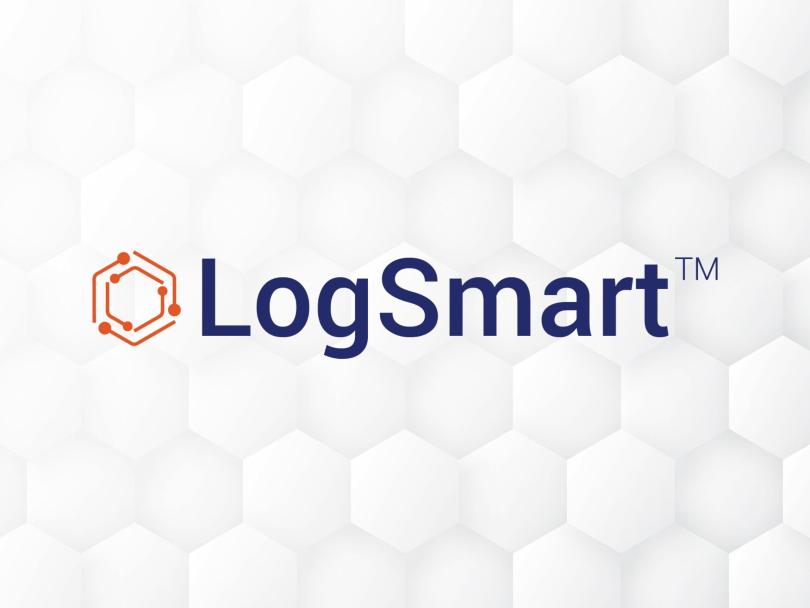
Peak Policy and Next Generation (PNG™) Inventory Models
LMI’s acclaimed tool for managing infrequent demand or frequent highly variable demand within your inventory.
Using Risk Management to Optimize Inventory
PNG™ is a suite of tools for inventory control of items with highly variable demand. The tool combines the capabilities of two of LMI's advanced inventory optimization models—Peak Policy and Next Generation (NextGen). Peak Policy optimizes inventory levels for items with infrequent, intermittent demand, while NextGen handles items with more frequent demand. Assignment logic, based on demand frequency, automatically routes items to the appropriate model. PNG™ improves forecasting accuracy while balancing the risks associated with the various dimensions of inventory performance, such as inventory value, customer service, and procurement workload.
Avoid Investing in the Wrong Items
The unstable demand patterns for many items makes them inherently unforecastable and results in large forecasting errors. Much like the flip of a coin, the processes that are generating the demand defy prediction. Buyers using traditional methods to forecast items with intermittent, unstable demand patterns frequently end up with the wrong items on the shelf. Due to such forecasting errors, enterprises experience overinvestment in some items, shortages for others, and excessive and unstable buyer workload. Safety stock and order quantity computations lose key information in the data, compounding these problems.
-
Balance Investment and Risk
LMI’s advice: stop forecasting. Instead PNG™ employs a risk-based hedging strategy that uses demand history and item characteristics to set procurement levels for unforecastable inventory. Input data includes five years’ (or the available) transactional demands, prices, current asset data, replenishment lead-times, minimum buy quantities, and other item characteristics. The tools generate tradeoff curves that display tradeoffs between wait time, inventory value, and annual buys. A supply chain manager picks a point on a curve that’s best for desired business outcomes, and PNG™ calculates minimum and maximum levels for each part. PNG™ doesn’t require accepting a forecast with unknown financial implications—there’s no question of how much of the forecast to honor. It also avoids separate decisions for safety stock and order quantities—selecting a single point on a curve is both simpler and more comprehensive.
Reduce Inventory, Improve Customer Service, Lower Workload
Setting inventory levels directly based on demand transactions rather than on artificial statistical models improves forecasting accuracy and results in significant benefits. PNG™ helps planners make integrated decisions and tradeoffs that for items with volatile, intermittent demand:
- Reduce inventory investment without degrading customer service;
- Improve customer service without increasing inventory investment;
- Lower the number of procurement actions.
Rigorous testing of PNG™ against the best-known inventory approaches shows that for items with volatile demand the tools can:
- Reduce inventory investment up to 15 percent;
- Reduce procurement workload up to 50 percent;
- Reduce customer wait time 20–30 percent.
Related Content
Explore All-
Read more on 'LMI Expands Space Market Footprint with New Colorado Springs Office '
 Press Release
Press ReleaseLMI Expands Space Market Footprint with New Colorado Springs Office
LMI, a leading technology solutions provider for the federal government, is pleased to announce the opening of its new office in Colorado Springs, Colorado. Located at 2424 Garden of the Gods Road, Suite F490, this strategic addition will serve as the primary location for support to LMI’s space market and its customers.
-
Read more on 'LMI Continues Audit Readiness and Support Services to DoD’s Innovative Readiness Training Program '
 Press Release
Press ReleaseLMI Continues Audit Readiness and Support Services to DoD’s Innovative Readiness Training Program
LMI, a leading provider of management consulting services, has been awarded a $16.4 million contract to continue supporting Department of Defense (DoD) Innovative Readiness Training (IRT) along with other elements of the Civil-Military Programs (CMP) portfolio.
-
Read more on 'DoD Maintenance Symposium '
 News & Events
News & EventsDoD Maintenance Symposium
Our dynamic, globally connected world presents economic opportunity, strategic competition, and security risks. LMI’s Logistics Decision Advantage (LDA) enables intelligent business and security decisions by creating the ability to anticipate disruptions, identify and mitigate vulnerabilities, and effectively prioritize and trade risk for a competitive advantage.
-
Read more on 'LMI to Deliver Groundbreaking AI Solution, LIGER™, to the U.S. Army '
 Press Release
Press ReleaseLMI to Deliver Groundbreaking AI Solution, LIGER™, to the U.S. Army
LMI has been awarded a contract to provide technical services and products to the Deputy Assistant Secretary of the Army for Data, Engineering, and Software (DASA-DES). LMI will use its groundbreaking generative artificial intelligence (GenAI) solution, LIGER™, to enhance the Army’s digital capabilities at Impact Level 5.
-
Read more on 'LMI Expands Digital Transformation Efforts for DLA Defense Enterprise Data Standards Office '
 Press Release
Press ReleaseLMI Expands Digital Transformation Efforts for DLA Defense Enterprise Data Standards Office
LMI has been awarded a $9.4 million contract to continue functional and logistics systems interoperability support services for the Defense Logistics Agency (DLA) Information Operations (J6), Defense Enterprise Data Standards Office (DEDSO).
-
Read more on 'Logistics Decision Advantage '
 What We Do
What We DoLogistics Decision Advantage
The competitive edge that integrates multiple logistics domains to enable complex operations decisions. LMI’s Logistics Decision Advantage (LDA) creates strategic advantage with trusted data insight for faster, more intelligent action.
-
Read more on 'Business Modernization '
 What We Do
What We DoBusiness Modernization
LMI helps leaders stay relevant, efficient, and adaptive in a dynamic business landscape. We modernize and streamline operations so leaders can focus on their mission. Our solutions leverage business process improvement, digital product innovation, and adaptive business operations, using cutting-edge tools and technology to help you thrive in an increasingly digital world.
-
Read more on 'Workforce Evolution '
 What We Do
What We DoWorkforce Evolution
LMI’s holistic solutions help government workforces adapt to evolving goals and technological shifts, maximizing productivity and potential. We combine human capital expertise with innovation and technology to enhance employee experience, boost impact, and optimize talent across the management lifecycle. Using agile methodologies and digital tools, LMI accelerates workforce evolution.
-
Read more on 'Organizational Transformation '
 What We Do
What We DoOrganizational Transformation
LMI architects, plans, and implements complex organizational transformations that ensure mission delivery while fostering cultural, procedural, and systemic change. Our initiative driven, organization-wide tiger team approach, combined with multimedia communication strategies and data-driven insights, drives continuous improvement and keeps your workforce informed.
-
Read more on 'LMI Selected to Support Army Digital Transformation Initiatives '
 Press Release
Press ReleaseLMI Selected to Support Army Digital Transformation Initiatives
LMI has been selected to provide Technical Services and Products to the Deputy Assistant Secretary of the Army for Data, Engineering, and Software (DASA-DES). This contract, with a ceiling value of $47.6M, represents a new milestone in LMI's commitment to supporting the U.S. Army's digital transformation efforts.
-
Read more on 'Thank you for visiting us at the 2025 DODIIS Worldwide Conference '
 News & Events
News & EventsThank you for visiting us at the 2025 DODIIS Worldwide Conference
The complexities associated with supporting current defense and future military concepts require holistic and visionary insights that bring the most operationally effective, sustainable, and cost-efficient solutions to complex problems.
-
Read more on 'LMI Unveils Groundbreaking GenAI Solution: LIGER™ '
 Press Release
Press ReleaseLMI Unveils Groundbreaking GenAI Solution: LIGER™
LIGER™ harnesses the power of advanced technology, data analytics, and the latest in machine learning and natural language processing to provide secure, private, and trustworthy GenAI solutions for government.
-
Read more on 'Managing Planning Assumptions '
 Insights
InsightsManaging Planning Assumptions
Project planning always requires addressing uncertainty. When confronted with multiple possible futures, planners must make assumptions about which reality is most likely to be true.
-
Read more on 'LMI to Develop SCREEn Supply Chain Risk Management Support Capability for DoD '
 Press Release
Press ReleaseLMI to Develop SCREEn Supply Chain Risk Management Support Capability for DoD
The United States Transportation Command (USTRANSCOM) Strategic Plans, Policy, and Logistics Directorate has selected LMI for strategic campaign planning and support for the Department of Defense Functional Campaign Plan for Global Deployment and Distribution and USTRANSCOM’s Combatant Command Campaign Plan.
-
Read more on 'Army CDO Data Summit 2024 '
 News & Events
News & EventsArmy CDO Data Summit 2024
The complexities associated with supporting current defense and future military concepts require holistic and visionary insights that bring the most operationally effective, sustainable, and cost-efficient solutions to complex problems.
-
Read more on 'NASA Selects LMI for Data Analysis and Technical Support Services '
 Press Release
Press ReleaseNASA Selects LMI for Data Analysis and Technical Support Services
The National Aeronautics and Space Administration (NASA) has selected LMI to provide a wide range of technology-enabled strategic management and technical solutions through the Data Analysis and Technical Support Services II (DATSS II) blanket purchase agreement.
-
Read more on 'Effective Property Tracking Improves Audit Results '
 Insights
InsightsEffective Property Tracking Improves Audit Results
In keeping with the principles of LMI’s performance optimization line of business, our teams of subject matter experts optimize key controls for consistent, compliant, and effective operations. LMI leverages considerable experience across DoD in optimizing and updating internal controls and remediating audit findings to work with organizations.
-
Read more on 'Risk Management in an Agile World '
 Insights
InsightsRisk Management in an Agile World
Coupled with its Performance Optimization Line of Business, LMI uses Risk Management to enhance the efficiency and effectiveness of organizations and operations. If your organization is looking to better integrate Project and Risk Management activities within your specific Agile environment, LMI’s team of Project and Portfolio Management (PPM) subject matter experts can help.
-
Read more on 'AUSA Global Force 2024 '
 News & Events
News & EventsAUSA Global Force 2024
The complexities associated with supporting current defense and future military concepts require holistic and visionary insights that bring the most operationally effective, sustainable, and cost-efficient solutions to complex problems.
-
Read more on 'LMI Forge Technology Studio: Case Studies '
 Innovation at the Pace of Need®
Innovation at the Pace of Need®LMI Forge Technology Studio: Case Studies
Learn how the LMI Forge - our technology studio - builds scalable agile technology to rapidly deliver sophisticated technical solutions to our customers with our case studies.
-
Read more on 'Chris Ayers '
 Our Team
Our TeamChris Ayers
Chris Ayers serves as LMI’s practice area lead for acquisition. In his role, he helps structure resources, customer-focused solution development, and acquisition efforts to align with strategic priorities.
-
Read more on 'Jane McTigue '
 Our Team
Our TeamJane McTigue
Jane McTigue is a principal in logistics strategy and integration at LMI. In her role, Jane leads diverse, multi-disciplined teams to drive growth to the support corporate strategy for Army programs.
-
Read more on 'LMI to Support USTRANSCOM in Campaign Planning for Global Deployment, Distribution, and Capability Development '
 Press Release
Press ReleaseLMI to Support USTRANSCOM in Campaign Planning for Global Deployment, Distribution, and Capability Development
The United States Transportation Command (USTRANSCOM) Strategic Plans, Policy, and Logistics Directorate has selected LMI for strategic campaign planning and support for the Department of Defense Functional Campaign Plan for Global Deployment and Distribution and USTRANSCOM’s Combatant Command Campaign Plan.
-
Read more on 'LMI to Support Research & Development for DLA Clothing and Textiles '
 Press Release
Press ReleaseLMI to Support Research & Development for DLA Clothing and Textiles
The Defense Logistics Agency (DLA) Military Unique Sustainment Technology (MUST) Program selected LMI to support research and development (R&D) for the DLA Troop Support Clothing and Textiles (C&T) supply chain.
-
Read more on 'Sealift: The Foundation of U.S. Military Power Projection '
 Perspective
PerspectiveSealift: The Foundation of U.S. Military Power Projection
As resilience and self-defense become exponentially more important in the highly lethal military operating environments of tomorrow, American sea power is the difference maker, in peace or conflict.
-
Read more on 'Enabling Disaster Preparedness in Global Health '
 Insights
InsightsEnabling Disaster Preparedness in Global Health
Nations and philanthropic organizations struggle to deal with a growing number of climatologically driven disasters. Transportation and distribution of critically needed supplies has become more of a challenge as many areas deal with aging infrastructure and roads that only exacerbate the problems when disaster strikes. Governments and institutions need predictive analysis to get ahead of the problem.
-
Read more on 'The Evolving National Security Landscape '
 Insights
InsightsThe Evolving National Security Landscape
The U.S. national security establishment has produced several documents outlining the mounting risks from global climate change and environmental degradation.
-
Read more on 'LMI to Continue Strategy, Strategic Engagement, Concepts, and Wargames Support for USTRANSCOM '
 Press Release
Press ReleaseLMI to Continue Strategy, Strategic Engagement, Concepts, and Wargames Support for USTRANSCOM
The United States Transportation Command (USTRANSCOM) Strategic Plans, Policy, and Logistics Directorate has selected LMI to continue supporting the Strategy, Strategic Engagement, Concepts, and Wargames (SSECW) program.
-
Read more on 'Redefining Business Optimization in the COVID Era '
 Perspective
PerspectiveRedefining Business Optimization in the COVID Era
In a world beset by pandemic and climate risks, resiliency has become a defining virtue of business operations.
-
Read more on 'LMI Experts Champion Digital Engineering for Defense Sustainment '
 Perspective
PerspectiveLMI Experts Champion Digital Engineering for Defense Sustainment
In an op-ed for C4ISRNET, Ben Kassel and Bruce Kaplan call for more emphasis on model-based definition across the DoD enterprise.
-
Read more on 'LMI Launches Solution to Provide "So What" to Illuminated Supply Chain Data '
 Press Release
Press ReleaseLMI Launches Solution to Provide "So What" to Illuminated Supply Chain Data
LMI today introduced their supply chain risk management solution, LogSmart™ Supply. The solution empowers analysts and program managers to answer “so, what?” from their supply chain risks on demand.
-
Read more on 'OpenPolicy™: Knowledge Drives the Search '
 White Paper
White PaperOpenPolicy™: Knowledge Drives the Search
LMI’s OpenPolicy™ semantic search service is a fantastically powerful way to research prose documents.
-
Read more on 'How to Strengthen Cybersecurity Strategic Planning '
 White Paper
White PaperHow to Strengthen Cybersecurity Strategic Planning
Boards and executive teams spend months each year developing and reviewing strategic plans. But what happens next once it has been approved? When it comes to something as critical as your organization’s cybersecurity, the specific plans put in place should always remain adaptable and adjust as requirements change. An effective cybersecurity plan should address evolving threats while aligning with an organization’s mission, strategy and budget, but the strategic planning required for execution is often overlooked.
-
Read more on 'COVID-19 and Supply Chain Resilience: What’s Next? '
 White Paper
White PaperCOVID-19 and Supply Chain Resilience: What’s Next?
LMI hosted the Potomac Officers Club event, Supply Chain Resilience and COVID-19: What’s Next? on June 11, 2020. Government leaders and logistics experts discussed the pre-COVID-19 supply chain, effects from COVID-19, and investment areas for resilience. This paper summarizes poll data collected from audience members as well as insights from the panel.
-
Read more on 'Three Considerations for VA and DHA Digital Transformation '
 Innovation at the Pace of Need®
Innovation at the Pace of Need®Three Considerations for VA and DHA Digital Transformation
The transformation will improve organizations and patient outcomes. LMI experts have been strategic partners throughout other large-scale digital transformations and offer insights to help these projects succeed.
-
Read more on 'Skills-Based Analytics Transform Hiring and Talent Management '
 Insights
InsightsSkills-Based Analytics Transform Hiring and Talent Management
As an internal research and development project, LMI created the Human Capital Data Analytics platform to tackle the skills-forward nature of today’s hiring, retention, and resource allocation challenges.
-
Read more on 'Healthcare Compliance '
 What We Do
What We DoHealthcare Compliance
LMI’s compliance approach centers on reducing programmatic risks while minimizing participants’ burden through data analytics and proactive engagement and education.
-
Read more on 'Why Climate Change Belongs on Your Financial Report '
 Insights
InsightsWhy Climate Change Belongs on Your Financial Report
Extreme-weather events pose considerable fiscal risk to agencies’ assets and operations. Learn why disclosure of climate-related risk is integral to an agency’s financial reporting.
-
Read more on 'LMI Awarded JE-OPETS Logistics and Medical Component Task Order '
 Press Release
Press ReleaseLMI Awarded JE-OPETS Logistics and Medical Component Task Order
LMI has been selected to support the Joint Program Executive Office for Chemical, Biological, Radiological and Nuclear Defense (JPEO-CBRND) Logistics and Medical business area.
-
Read more on 'Energy & Climate Analytics '
 What We Do
What We DoEnergy & Climate Analytics
Using energy and climate resilience analytics, LMI can enhance the ClimateIQ™ of all federal decision-makers to manage and reduce mission disruptions from climate and extreme weather events, simultaneously increasing energy resilience and reducing dependence on external energy supplies that are vulnerable to disruptions.
-
Read more on 'LMI Selected as 2022 U.S. Postal Service Supplier Excellence Award Winner for Second Consecutive Year '
 Press Release
Press ReleaseLMI Selected as 2022 U.S. Postal Service Supplier Excellence Award Winner for Second Consecutive Year
Out of 12,400 suppliers, LMI is one of four recipients in the supplier excellence category, which recognizes exceptional quality and on-time delivery performance. LMI was recognized for our contributions to several strategic programs, including implementing updated program and portfolio management planning initiatives into the Postmaster General’s (PMG’s) Strategic Portfolio Planning.
-
Read more on 'LMI Selected to Expand Support to U.S. Army Through STEPSS Contract '
 Press Release
Press ReleaseLMI Selected to Expand Support to U.S. Army Through STEPSS Contract
LMI has been selected to support the U.S. Army’s Combat Capabilities Development Command Chemical Biological Center (DEVCOM CBC). This 10-year, potential $869 million Scientific, Technical, Engineering and Program Support Services (STEPSS) multiple-award task order contract will allow LMI to continue helping prepare the U.S. Army to detect and respond to chemical, biological, radiological, and nuclear (CBRN) threats.
-
Read more on 'LMI Selected to Support GSA’s OFM’s Energy Division and Climate and Sustainability Division through Renewable Energy BPA '
 Press Release
Press ReleaseLMI Selected to Support GSA’s OFM’s Energy Division and Climate and Sustainability Division through Renewable Energy BPA
LMI will provide subject matter expertise and program management services for the GSA Public Buildings Service (PBS) Office of Facilities Management (OFM) Energy Division and Climate and Sustainability Division.
-
Read more on 'LMI Selected to Support HHS ASPR’s Countermeasures Acceleration Group '
 Press Release
Press ReleaseLMI Selected to Support HHS ASPR’s Countermeasures Acceleration Group
LMI has been awarded a two-year, $24 million contract to provide support to the U.S. Department of Health and Human Services (HHS) Assistant Secretary for Preparedness and Response’s (ASPR) Countermeasures Acceleration Group (CAG).
-
Read more on 'LMI Selected to Support the Office of the Deputy Assistant Secretary of Defense for Energy '
 Press Release
Press ReleaseLMI Selected to Support the Office of the Deputy Assistant Secretary of Defense for Energy
LMI will support the Office of the Deputy Assistant Secretary of Defense for Energy by furnishing strategic planning, analysis, programming, and functional energy expertise. This award represents LMI’s first contract with this organization since the operational energy and installation energy offices and roles were combined.
-
Read more on 'LMI to Support DARPA's Strategic Technology Office '
 Press Release
Press ReleaseLMI to Support DARPA's Strategic Technology Office
LMI and partners will develop a testing and evaluation framework for DARPA’s LogX R&D prototype program.
-
Read more on 'LMI to Support Modernization at GSA’s Public Buildings Service '
 Press Release
Press ReleaseLMI to Support Modernization at GSA’s Public Buildings Service
LMI, in partnership with Tiber Creek Consulting, will support digital transformation at the nation’s largest public real estate organization.
-
Read more on 'LMI to Support Policy Management and Reporting for DoD Security Cooperation '
 Press Release
Press ReleaseLMI to Support Policy Management and Reporting for DoD Security Cooperation
LMI will assist the Department of Defense (DoD) in streamlining policy development and reporting for its security cooperation activities in support of the Defense Security Cooperation Agency (DSCA), with a total potential contract value of approximately $5 million.
-
Read more on 'GAO High-Risk Series: Supply Chain Management '
 Insights
InsightsGAO High-Risk Series: Supply Chain Management
The Government Accountability Office (GAO) released a report highlighting the successful efforts of federal government agencies to address high-risk areas and improve programs.
-
Read more on 'Using AI To Improve Hazard Response '
 Insights
InsightsUsing AI To Improve Hazard Response
AI/ML acts as a force multiplier, amplifying the quality of results fed into the decision-making process, ultimately saving valuable time.
-
Read more on 'LMI Supports ODASD(MR) Efforts to Lower Costs and Improve Warfighter Readiness through Innovation '
 Press Release
Press ReleaseLMI Supports ODASD(MR) Efforts to Lower Costs and Improve Warfighter Readiness through Innovation
LMI will provide industrial base assessments, data analytics, and policy and resource management services to assist the Department of Defense (DoD) in meeting materiel readiness requirements across its complex sustainment enterprise.
-
Read more on 'Stuart Jones '
 Our Team
Our TeamStuart Jones
Stu Jones leads LMI’s Office of the Secretary of Defense (OSD) submarket and oversees the delivery and execution of programs, projects, and tasks as well as strategic growth. He provides cross-service line support for policy development, planning, resource management, and program evaluation.
-
Read more on 'Scott Ritzel '
 Our Team
Our TeamScott Ritzel
Scott, a retired Air Force colonel with over 30 years of logistics experience, served in the maintenance career field supporting a diverse portfolio, including fighters, bombers, rotary wing, conventional and nuclear munitions, and ground-based space systems.
-
Read more on 'Rob Kline '
 Our Team
Our TeamRob Kline
Rob is a longtime LMI expert in systems modeling, data analytics, logistics analyses, and software development.
-
Read more on 'Randal Dragon '
 Our Team
Our TeamRandal Dragon
Randal leads LMI’s defense market business development team’s strategic planning activities, including identifying growth targets and solution and core offering development.
-
Read more on 'Patricia Birdseye '
 Our Team
Our TeamPatricia Birdseye
Patricia Birdseye leads organizational quality at LMI through a risk-based approach to implementing business processes.
-
Read more on 'Michael Dudley '
 Our Team
Our TeamMichael Dudley
Mike Dudley came to LMI from the Defense Contract Management Agency (DCMA), where he served as civilian director of the Stockton, California, office. In this role, he supervised over 270 civilian and military personnel with responsibility for managing 10,300 contracts valued at $23 billion.
-
Read more on 'Matt Peterson '
 Our Team
Our TeamMatt Peterson
Matt leads LMI's supply chain reengineering and process improvement projects for U.S. government customers. He has 30 years of experience as a government logistics manager and supply chain consultant.
-
Read more on 'Matt Granger '
 Our Team
Our TeamMatt Granger
Matt Granger leads solutions architecture for LMI’s Digital Services service line, specializing in ServiceNow and enterprise applications.
-
Read more on 'Kristen Cheman '
 Our Leadership Team
Our Leadership TeamKristen Cheman
As senior vice president of the intelligence market, Kristen combines subject matter expertise and leading-edge technologies to bring the best ideas and digitally enabled services to our customers.
-
Read more on 'Kerry McCarthy '
 Our Team
Our TeamKerry McCarthy
Kerry has enhanced supply chain resilience for a diverse range of organizations across the defense, health, civilian, intelligence, and private sectors for nearly 20 years. As a fellow at LMI, he leverages his engineering background and supply chain expertise to develop and implement innovative cross-functional solutions, oversee supply chain resilience projects, and foster collaboration with academia, industry, and government.
-
Read more on 'LMI to Perform Study on Future of NASA’s Upper Class E Airspace Operations '
 Press Release
Press ReleaseLMI to Perform Study on Future of NASA’s Upper Class E Airspace Operations
LMI will advise the National Aeronautics and Space Administration (NASA) under the Air Traffic Management–eXploration (ATM-X) project by conducting a future-focused research study to assess the market and traffic management requirements for Upper Class E airspace.
-
Read more on 'Keith Rodgers '
 Our Team
Our TeamKeith Rodgers
Keith brings nearly two decades of experience in leveraging innovative techniques to assess organizational performance and challenges.
-
Read more on 'Joseph Niehaus '
 Our Leadership Team
Our Leadership TeamJoseph Niehaus
Joe leads a diverse organization of logistics consultants developing and delivering advanced logistics solutions in acquisition and sustainment; infrastructure, energy, and environment; and supply chain management. He and his organization focus on helping LMI’s customers build supply chain resilience and deliver innovative supply chain solutions across the defense, civilian agencies, public health, and national security markets with increasing agility for accelerated decision-making at the pace of need.
-
Read more on 'TBM Council Honors LMI for Strategic Planning '
 Press Release
Press ReleaseTBM Council Honors LMI for Strategic Planning
The strategic planning award recognizes organizations that align financial plans with business priorities and adjust plans to reflect shifting priorities, reduce risk, and capitalize on market opportunities.
-
Read more on 'Why Hedging Is Essential for Resilient Supply Chains '
 Insights
InsightsWhy Hedging Is Essential for Resilient Supply Chains
COVID-19 showed how just-in-time logistics and ultra-lean supply chains fail in times of uncertainty, compounding health risks and threats to national security. Hedging can help ensure that doesn’t happen again.
-
Read more on 'Supply Chain Integrity: Critical Every Day '
 Insights
InsightsSupply Chain Integrity: Critical Every Day
LMI has 60+ years of experience ensuring that clients receive the best logistics support. In his recent blog, Jon Amis explains why supply chain integrity must be considered throughout the entire year. Our supply chain management practice assists with all aspects of a customer’s supply chain, from managing assets, property, and inventory, to performance measures, process improvement, and overall supply chain risk.
-
Read more on 'Enterprise Agility '
 What We Do
What We DoEnterprise Agility
Employing an Agile mindset to accelerate organizational transformation, strengthen programs, and meet dynamic business needs.
-
Read more on 'AUSA Global Force 2023 '
 News & Events
News & EventsAUSA Global Force 2023
Download the white paper to explore your supply chain’s biggest threats and how to mitigate them.
-
Read more on 'Maintenance Symposium '
 News & Events
News & EventsMaintenance Symposium
Download our infographic on cybersecurity risks to your supply chain.
-
Read more on 'Change Management '
 What We Do
What We DoChange Management
For federal agencies to become more agile and responsive to mission needs, enterprise-wide change is often required. To support this transformation, LMI built an organizational change management (OCM) model to assess an agency’s operating environment, identify priorities, and furnish strategies that facilitate effective adoption.
-
Read more on 'Taking Inventory to the Next Level '
 Deep Expertise, Customized Tools
Deep Expertise, Customized ToolsTaking Inventory to the Next Level
For 60 years, LMI has been delivering innovative, world-class logistics and supply chain solutions. Our independent research and development efforts have produced tools that have become the standard for supply chain management and logistics analytics.
-
Read more on 'Health Solutions '
 Innovation at the Pace of Need®
Innovation at the Pace of Need®Health Solutions
LMI delivers innovative health solutions for mission impact at the pace of need, enabling our federal health customers to thrive while adapting to modern mission needs.
-
Read more on 'ServiceNow '
 Solutions
SolutionsServiceNow
LMI has the expertise and flexibility to handle the federal government’s ServiceNow needs.
-
Read more on 'Contract Vehicles '
 Who We Serve
Who We ServeContract Vehicles
Operating at the new speed of possible, LMI accelerates the pace of progress, enabling our customers to thrive while adapting to modern mission needs.
-
Read more on 'LogSmart™: The right logistics insights before you need them. '
 Solutions
SolutionsLogSmart™: The right logistics insights before you need them.
LogSmart™ is a configurable suite of applications for increasing effectiveness and efficiency of logistics operations.
-
Read more on 'Baseline, Strategy & Program Support '
 What We Do
What We DoBaseline, Strategy & Program Support
LMI’s baseline assessment and strategy development uses rigorous analysis to identify key gaps in your current risk management approach and provides recommendations for the most impactful investments.
-
Read more on 'Supply Chain Risk Mitigation and Resilience '
 What We Do
What We DoSupply Chain Risk Mitigation and Resilience
LMI’s supply and demand side risk optimization tools enable us to stress-test your environment to identify meaningful and cost-effective strategies to reduce your risk exposure.
-
Read more on 'Supply Chain Risk Assessments '
 What We Do
What We DoSupply Chain Risk Assessments
LMI develops cutting-edge machine learning applications to proactively identify supply chain risks and leverage prescriptive analytics to help organizations modernize their approach to risk identification and mitigation.
-
Read more on 'Reducing Supply Chain Vulnerabilities Using A Whole of Nations Approach '
 Insights
InsightsReducing Supply Chain Vulnerabilities Using A Whole of Nations Approach
International collaboration with allies is needed to significantly increase supply chain resiliency.
-
Read more on 'SysLinks™—System Optimization and Network Linkages '
 Innovation at the Pace of Need™
Innovation at the Pace of Need™SysLinks™—System Optimization and Network Linkages
SysLinks™ is the first practical method for linking reliability and maintainability models with spares optimization for complex networks. This new methodology helps managers pinpoint investments that will have the greatest positive impact on mission success.
-
Read more on 'What the U.S. Must Do Now To Avoid the Next Pandemic '
 Insights
InsightsWhat the U.S. Must Do Now To Avoid the Next Pandemic
COVID-19 is not the first pandemic the United States has faced, but it may be the one that teaches us some very modern lessons about public trust, our surveillance networks, and effective response management.
-
Read more on 'Planning for Vaccine Distribution in 6 Key Areas '
 Insights
InsightsPlanning for Vaccine Distribution in 6 Key Areas
COVID-19 has made clear that preparing for pandemics is a critical public health challenge. Here’s what leaders can do now to improve vaccination efforts.
-
Read more on 'Erwin Villiger '
 Our Team
Our TeamErwin Villiger
Erwin is a senior subject matter expert with more than 25 years of experience at the nexus of national security and the environment.
-
Read more on 'LMI Awarded the Joint Artificial Intelligence Center (JAIC) Data Readiness Artificial Intelligence Development (DRAID) Program Basic Ordering Agreement (BOA) '
 Press Release
Press ReleaseLMI Awarded the Joint Artificial Intelligence Center (JAIC) Data Readiness Artificial Intelligence Development (DRAID) Program Basic Ordering Agreement (BOA)
LMI will provide a broad spectrum of data management and analytic services for the Department of Defense (DoD) Joint Artificial Intelligence Center (JAIC) with the goal of accelerating artificial intelligence (AI) scaling across the department.
-
Read more on 'LogSmart™ Supply '
 Solutions
SolutionsLogSmart™ Supply
LogSmart™ Supply empowers decision makers to boost supply chain resiliency by providing the most complete insights into the risks and opportunities present in the supply chains you depend on.
-
Read more on 'Evaluate Inventory and Financial Impacts Before Making Changes '
 Innovation at the Pace of Need®
Innovation at the Pace of Need®Evaluate Inventory and Financial Impacts Before Making Changes
FINISIM™ is a discrete event simulation that provides rapid analyses of complex, large-scale inventory and financial systems and the interaction between them, tracking supply-chain–related financial metrics.
-
Read more on 'Aircraft Sustainability Model (ASM®) sparing model '
 Innovation at the Pace of Need®
Innovation at the Pace of Need®Aircraft Sustainability Model (ASM®) sparing model
The Aircraft Sustainability Model (ASM®) sparing model is a state-of-the-art method for developing spares requirements to support high-technology systems. Over the last 30 years, the ASM® sparing model's advanced algorithms and user interfaces have made it an international leader in computing spares requirements.
-
Read more on 'Solutions '
 The New Speed of Possible™
The New Speed of Possible™Solutions
We’re creating innovative solutions to transform emerging needs into extraordinary impacts at The New Speed of Possible™.
-
Read more on 'Integrating IoT and Sensors To Improve Infrastructure Management Systems '
 Blog
BlogIntegrating IoT and Sensors To Improve Infrastructure Management Systems
When paired with AI/ML, the data provided by IoT devices and sensors offer insights on the status and condition of assets while enhancing utility, efficiency, and resiliency. Our experts weigh in on what is important to consider when implementing these technologies to improve infrastructure management.
-
Read more on 'Initial Outfitting Support to Military Health Facilities '
 Perspective
PerspectiveInitial Outfitting Support to Military Health Facilities
LMI helps Ireland Army Health Clinic at Fort Knox, KY, open its doors.
-
Read more on 'Sustainability '
 What We Do
What We DoSustainability
LMI adapts industry-leading approaches to customers’ unique mission needs. We support energy, sustainability, and climate resilience efforts with customizable analysis and reporting tools.
-
Read more on 'Predicting Failure: Is the Government Finally Ready for Predictive Fleet Maintenance? '
 Innovation at the Pace of Need®
Innovation at the Pace of Need®Predicting Failure: Is the Government Finally Ready for Predictive Fleet Maintenance?
Our workshop brought together experts from government, industry, and academia to identify the past obstacles to progress and propose solutions.
-
Read more on 'Business & Digital Transformation '
 What We Do
What We DoBusiness & Digital Transformation
LMI takes customers on a tailored digital transformation journey, ranging from small digital enhancements to enterprise-wide transformations.
-
Read more on 'Performance Optimization '
 What We Do
What We DoPerformance Optimization
Unlocking people’s full potential and using readily accessible data and technology to position organizations for long-term sustainability.
-
Read more on 'Wargaming '
 What We Do
What We DoWargaming
LMI’s highly qualified wargaming expertise and extensive knowledge of the future operating environment furnishes the subject matter expertise for planning, executing, and after-action support of joint, combatant command, service, and other wargames.
-
Read more on 'Technology Integration Partner '
 What We Do
What We DoTechnology Integration Partner
LMI combines hands-on expertise with existing and emerging technologies, our deep understanding of logistics processes and operations, and over 60 years of experience and partnership with the government for totally integrated technical solutions.
-
Read more on 'How Value-Based Care Can Improve for Patients, Providers and Payers Post COVID-19 '
 Insights
InsightsHow Value-Based Care Can Improve for Patients, Providers and Payers Post COVID-19
The federal government has focused on value-based care to increase efficiency in healthcare. Here’s what we must do to ensure the model’s success.
-
Read more on 'Modeling & Simulation '
 What We Do
What We DoModeling & Simulation
LMI’s modeling and simulation (M&S) capabilities evaluate and quantify changes to complex operations for uncertain future conditions.
-
Read more on 'Infrastructure Resilience '
 What We Do
What We DoInfrastructure Resilience
LMI helps federal agencies strengthen infrastructure resiliency with data-driven strategies that respect natural resources and support sustainability.
-
Read more on 'Real-Time Logistics Visualization To Save Time and Money When Tracking High-Value Assets '
 Insights
InsightsReal-Time Logistics Visualization To Save Time and Money When Tracking High-Value Assets
Automating logistics operations of the Naval Supply Systems Command O65 with advanced analytics and automated tracking of high-value assets using RFID.
-
Read more on 'LMI Participates in Viz for Social Good Challenge for India Water Portal '
 Innovation at the Pace of Need®
Innovation at the Pace of Need®LMI Participates in Viz for Social Good Challenge for India Water Portal
Members of LMI’s Data Visualization community of practice volunteered their time to participate in the Viz for Social Good Challenge.
-
Read more on 'LMI’s Approach to Improving Government Supply Chains '
 Innovation at the Pace of Need®
Innovation at the Pace of Need®LMI’s Approach to Improving Government Supply Chains
Supply chains are rapidly changing. Knowing how to make supply chains efficient and effective is more important than ever, but sometimes the challenge is knowing what to focus on and which practices to implement.
-
Read more on 'LMI’s Clark Spencer Talks Joint Health Risk Management (JHRM) for Defense Health '
 Insights
InsightsLMI’s Clark Spencer Talks Joint Health Risk Management (JHRM) for Defense Health
Using artificial intelligence and machine learning (AI/ML), we can make predictions about health consequences for the warfighter and deployed civilian personnel before they occur.
-
Read more on 'Turning Supply Chain Risks into Decisive Action '
 Innovation at the Pace of Need®
Innovation at the Pace of Need®Turning Supply Chain Risks into Decisive Action
LogSmart™ Supply offers the industry's most complete insight into the impacts of supply chain risks and mitigation strategies. Turn your risk data into decisive action.
-
Read more on 'Mission Engineering '
 What We Do
What We DoMission Engineering
Integrating modeling and simulation, supply chain engineering, wargaming, and more, LMI harnesses more than 60 years of cutting-edge innovation and experience to enhance capabilities and technologies in support of our customers’ most challenging mission requirements.
-
Read more on 'LMI Extends Support to OSD in Electronic Warfare, Air Platforms and Weapons, and International Cooperation '
 Press Release
Press ReleaseLMI Extends Support to OSD in Electronic Warfare, Air Platforms and Weapons, and International Cooperation
LMI will continue to support the Office of the Secretary of Defense address critical acquisition challenges through a five-year contract valued at over $16 million.
-
Read more on 'Logistics Automation: Where Military and Commercial Applications Converge '
 Innovation at the Pace of Need®
Innovation at the Pace of Need®Logistics Automation: Where Military and Commercial Applications Converge
To combat labor shortages in the transportation market, much of the world is investing in automated processes. For the U.S. military, logistics automation will be necessary in contested environments where near-peer adversaries target our logistics capabilities.
-
Read more on 'Logistics Decision Dominance '
 Insights
InsightsLogistics Decision Dominance
Now is the time to turn significant attention and resources to maintaining our logistics advantage.
-
Read more on 'LMI Migrating the Maintenance and Availability Data Warehouse to Advana '
 Press Release
Press ReleaseLMI Migrating the Maintenance and Availability Data Warehouse to Advana
LMI has been awarded a 1-year, $1.5 million contract for a one-time data migration from the LMI-created Maintenance and Availability Data Warehouse (MADW) to the Advana Data Warehouse for the Joint Artificial Intelligence Center.
-
Read more on 'LMI Symposium Brings Together Customers Tackling Complex Problems '
 Insights
InsightsLMI Symposium Brings Together Customers Tackling Complex Problems
Programs are finding innovative ways to streamline their acquisition and systems engineering strategies to compress schedules.
-
Read more on 'LMI Workshop Highlights Data-Driven Resiliency '
 Innovation at the Pace of Need®
Innovation at the Pace of Need®LMI Workshop Highlights Data-Driven Resiliency
"Analytics for Resilience: Infrastructure, Supply Chain, and Climate" attracted a cross-section of federal managers.
-
Read more on 'Supply Chain Resilience Solutions '
 What We Do
What We DoSupply Chain Resilience Solutions
LMI’s public-sector experts in logistics bring over 60 years of experience helping organizations mitigate supply chain risks. Our in-depth understanding of supply chain and government operations combine to provide effective, practical solutions for reducing and managing risk and increasing resiliency.
-
Read more on 'DARPA LogX '
 What We Do
What We DoDARPA LogX
The DARPA LogX program examines the resiliency of the global supply chain via data disruptions and various modeling approaches.
-
Read more on 'Cybersecurity '
 What We Do
What We DoCybersecurity
LMI specializes in cyber governance, risk, and compliance to help government agencies establish frameworks that align with regulatory requirements and effectively manage risk.
-
Read more on 'LMI Forms Digital and Analytic Solutions Unit to Accelerate Technology-Enabled Transformation for Federal Agencies '
 Press Release
Press ReleaseLMI Forms Digital and Analytic Solutions Unit to Accelerate Technology-Enabled Transformation for Federal Agencies
LMI has named Karen Britton as chief digital officer and vice president of marketing and communications and Josh Wilson as vice president of digital and analytic solutions, a new business unit resulting from the merger of its advanced analytics and digital services practices.
-
Read more on 'Employee Spotlight: Meet Scot Stitely '
 Culture News
Culture NewsEmployee Spotlight: Meet Scot Stitely
Scot joined LMI when it acquired Suntiva in 2021. He and his team are responsible for LMI’s strategic planning activities such as identifying growth targets and offering development strategies for customers in the defense and space markets.
-
Read more on 'Employee Spotlight: Meet Marshall Smith '
 Culture News
Culture NewsEmployee Spotlight: Meet Marshall Smith
Leveraging his over 25 years of predictive analytics experience, Marshall’s focus includes developing innovative solutions for customers and offering his expertise to grow LMI’s predictive analytics capabilities.
-
Read more on 'Employee Spotlight: Meet Jordan Hefferan '
 Culture News
Culture NewsEmployee Spotlight: Meet Jordan Hefferan
As a product portfolio owner, Jordan has defined and developed applications offering on-demand supply chain resiliency through LogSmart™ Supply and created customer solutions to understand, measure, and mitigate risks to contested logistics.
-
Read more on 'LMI Forge Technology Studio: Use Cases '
 Innovation at the Pace of Need®
Innovation at the Pace of Need®LMI Forge Technology Studio: Use Cases
Navigate LMI Forge solutions addressing specific use cases.
-
Read more on 'Employee Spotlight: Meet Randy Dragon '
 Culture News
Culture NewsEmployee Spotlight: Meet Randy Dragon
Prior to joining LMI in 2019, Randy Dragon acted in executive leadership and management positions in the United States Army, joint and multinational forces, and the defense industry. Before entering the civilian sector, Randy served over 30 years in the Army, entering active duty in 1980 after being commissioned in the infantry through the Reserve Officers' Training Corps program at James Madison University.
-
Read more on 'Health & Civilian '
 The New Speed of Possible™
The New Speed of Possible™Health & Civilian
Our subject matter experts and advisors have a broad knowledge base across the spectrum of federal health and civilian agencies to enable excellence in execution that transcends boundaries.
-
Read more on 'Homeland Security '
 Who We Serve
Who We ServeHomeland Security
Delivering award-winning acquisition, modeling, financial management, scientific, and logistics management support to the Department of Homeland Security.
-
Read more on 'Internet of Things (IoT) '
 What We Do
What We DoInternet of Things (IoT)
LMI helps customers make better risk management decisions through IoT technologies and toolkits using near-real-time analytical data.
-
Read more on 'Data & Analytics '
 What We Do
What We DoData & Analytics
LMI provides advanced data and analytic consulting expertise, pairing data scientists with domain experts to deliver innovative solutions at the pace of need.
-
Read more on 'Artificial Intelligence '
 What We Do
What We DoArtificial Intelligence
Our approach to applied AI includes MLOps, the practice of integrating machine learning models into production environments in a streamlined and scalable way.
-
Read more on 'What We Do '
 Innovation at the Pace of Need®
Innovation at the Pace of Need®What We Do
Supporting missions that have shaped the nation since 1961, we apply long-standing expertise to create sustainable solutions.
-
Read more on 'LMI Extends Support to USPS Corporate Sustainability and Energy Initiatives '
 Press Release
Press ReleaseLMI Extends Support to USPS Corporate Sustainability and Energy Initiatives
LMI will recommend strategies to support program and policy development, research and analysis, enterprise data management, corporate solutions and reporting, and strategic and national-level planning.
-
Read more on 'LMI To Expand Support of the Marine Corps Logistics Command '
 Press Release
Press ReleaseLMI To Expand Support of the Marine Corps Logistics Command
LMI will continue to provide strategic support to the United States Marine Corps Logistics Command with a new, one-year award. This will greatly aid the Marine Corps with inventory management using the ASM® Sparing Model, proprietary software and capabilities, and budget stratification tools.
-
Read more on 'LMI to Continue Support of DLA R&D Efforts '
 Press Release
Press ReleaseLMI to Continue Support of DLA R&D Efforts
LMI will continue supporting the Defense Logistics Agency by providing cutting-edge innovations to improve its technology and business processes. LMI will furnish support in the areas of planning, procurement, product quality, technical data, and data management.
-
Read more on 'LMI to Continue Army Enterprise Systems Integration Program Support '
 Press Release
Press ReleaseLMI to Continue Army Enterprise Systems Integration Program Support
LMI will continue to provide program management, business transformation, technical, and professional advisory services to the Project Manager, Army Data and Analytics Platforms (PM ARDAP), with a new three-year, $211 million award. LMI’s capabilities will enable the Army to modernize business operations and implement integrated management systems to transform Army enterprise resource planning and data systems.
-
Read more on 'Resources To Navigate the Age of COVID-19 '
 Pandemic Response Support
Pandemic Response SupportResources To Navigate the Age of COVID-19
Visit our resource center for the latest information and insights to help our federal clients navigate the age of COVID-19.
-
Read more on 'LMI Builds the Next Generation of DoD Civilian Scientists and Engineers with the SMART Scholarship-for-Service Program '
 Press Release
Press ReleaseLMI Builds the Next Generation of DoD Civilian Scientists and Engineers with the SMART Scholarship-for-Service Program
LMI has been awarded a new five-year, $450 million contract supporting the Department of Defense’s Science, Mathematics, and Research for Transformation (DoD SMART) Scholarship-for-Service Program.
-
Read more on 'LMI Joins Digital Manufacturing Institute MxD '
 Press Release
Press ReleaseLMI Joins Digital Manufacturing Institute MxD
LMI has joined MxD, one of 14 national institutes sponsored by the federal government to strengthen American manufacturing competitiveness.
-
Read more on 'LMI Awarded Larger Role Supporting Defense Acquisition and Sustainment '
 Press Release
Press ReleaseLMI Awarded Larger Role Supporting Defense Acquisition and Sustainment
LMI will support defense officials who oversee acquisition, capability development, and lifecycle support of critical weapons systems.
-
Read more on 'LMI Awarded JAIC Artificial Intelligence Center BPA '
 Press Release
Press ReleaseLMI Awarded JAIC Artificial Intelligence Center BPA
LMI has been selected as a Joint Artificial Intelligence Center (JAIC) Test & Evaluation (T&E) Blanket Purchase Agreement (BPA) awardee.
-
Read more on 'LMI Awarded DHA's OMNIBUS IV IDIQ Contract in All Four Market Segments '
 Press Release
Press ReleaseLMI Awarded DHA's OMNIBUS IV IDIQ Contract in All Four Market Segments
LMI has been awarded the Defense Health Agency (DHA) OMNIBUS IV indefinite delivery, indefinite quantity (IDIQ) $10 billion contract in all four market segments: (1) Research and Development; (2) Research and Development Support Services; (3) Regulatory Processes; and (4) Translational Science Support and Services.
-
Read more on 'LMI and TCS Uncover Climate Risks to F-35, Announce Enhanced Climanomics Platform '
 Press Release
Press ReleaseLMI and TCS Uncover Climate Risks to F-35, Announce Enhanced Climanomics Platform
Coastal flooding, temperature extremes, and storm damage could significantly disrupt the availability of facilities supporting the F-35 weapon system over the next 30 years, according to a joint analysis by LMI and The Climate Service (TCS).
-
Read more on 'LMI and Exiger to Lead DLA Pilot Program '
 Press Release
Press ReleaseLMI and Exiger to Lead DLA Pilot Program
LMI announced today that it, along with Exiger, has been awarded a contract to create a DLA pilot program to illuminate supply chain resiliency using AI/ML.
-
Read more on 'LMI to Advise NASA on Future Automation in the Air Cargo Industry '
 Press Release
Press ReleaseLMI to Advise NASA on Future Automation in the Air Cargo Industry
LMI and its partners will conduct a future-focused research study that will inform federal regulatory and investment decisions.
-
Read more on 'Kristen Cheman Named LMI Vice President of Digital & Analytic Solutions '
 Press Release
Press ReleaseKristen Cheman Named LMI Vice President of Digital & Analytic Solutions
LMI has promoted Kristen Cheman to vice president of digital & analytic solutions, where she combines subject matter expertise and leading-edge technologies to bring the best ideas and digitally-enabled services to our customers.
-
Read more on 'Joe Niehaus and Zaki Saleh Join LMI’s Senior Leadership Team '
 Press Release
Press ReleaseJoe Niehaus and Zaki Saleh Join LMI’s Senior Leadership Team
LMI promoted Joe Niehaus to senior vice president of the logistics service line and welcomes Zaki Saleh as senior vice president of the health & civilian market.
-
Read more on 'Bruce Kaplan '
 Our Team
Our TeamBruce Kaplan
With more than 35 years of experience in program management, source selection, information systems requirements and tools, and supply chain logistics, Bruce is one of LMI’s leading innovators and solution architects. He focuses on processes and technologies that cross organizational and functional boundaries to improve customer outcomes.
-
Read more on 'Data Analytics Can Address the U.S. Substance Abuse Crisis '
 Insights
InsightsData Analytics Can Address the U.S. Substance Abuse Crisis
Substance abuse is on the rise in America, but the federal government has an opportunity to leverage data analytics for an effective response.
-
Read more on 'Calculating Your Water Footprint to Improve Resilience '
 Innovation at the Pace of Need®
Innovation at the Pace of Need®Calculating Your Water Footprint to Improve Resilience
One way to calculate an organization’s water footprint is to literally measure the water used at a facility or series of facilities. But what happens when operations are far more complicated?
-
Read more on 'COVID-19: What Suppliers Can Do Now '
 Perspective
PerspectiveCOVID-19: What Suppliers Can Do Now
How to stay strategic as the pandemic’s ripple effect grows.
-
Read more on 'Addressing Complex Problems '
 Culture News
Culture NewsAddressing Complex Problems
During his 30-year tenure at LMI, Bruce Kaplan has used his expertise in defense logistics and research and development to help LMI and its clients succeed. With a strong commitment to innovation and exceeding customer expectations, Bruce has led efforts to modernize logistics through finding, developing, and pushing pioneering technologies. Learn about Bruce’s role as a logistics strategy and integration fellow and his plans to continue making a positive difference at LMI.
-
Read more on 'Changes to Construction Permits for Projects near Bodies of Water '
 Perspective
PerspectiveChanges to Construction Permits for Projects near Bodies of Water
If you have construction projects taking place near or in any bodies of water, you urgently need to evaluate your project plan. The U.S. Army Corps of Engineers announced reauthorization of the Nationwide Permits (NWPs), which could impact construction projects in progress or soon to be underway.